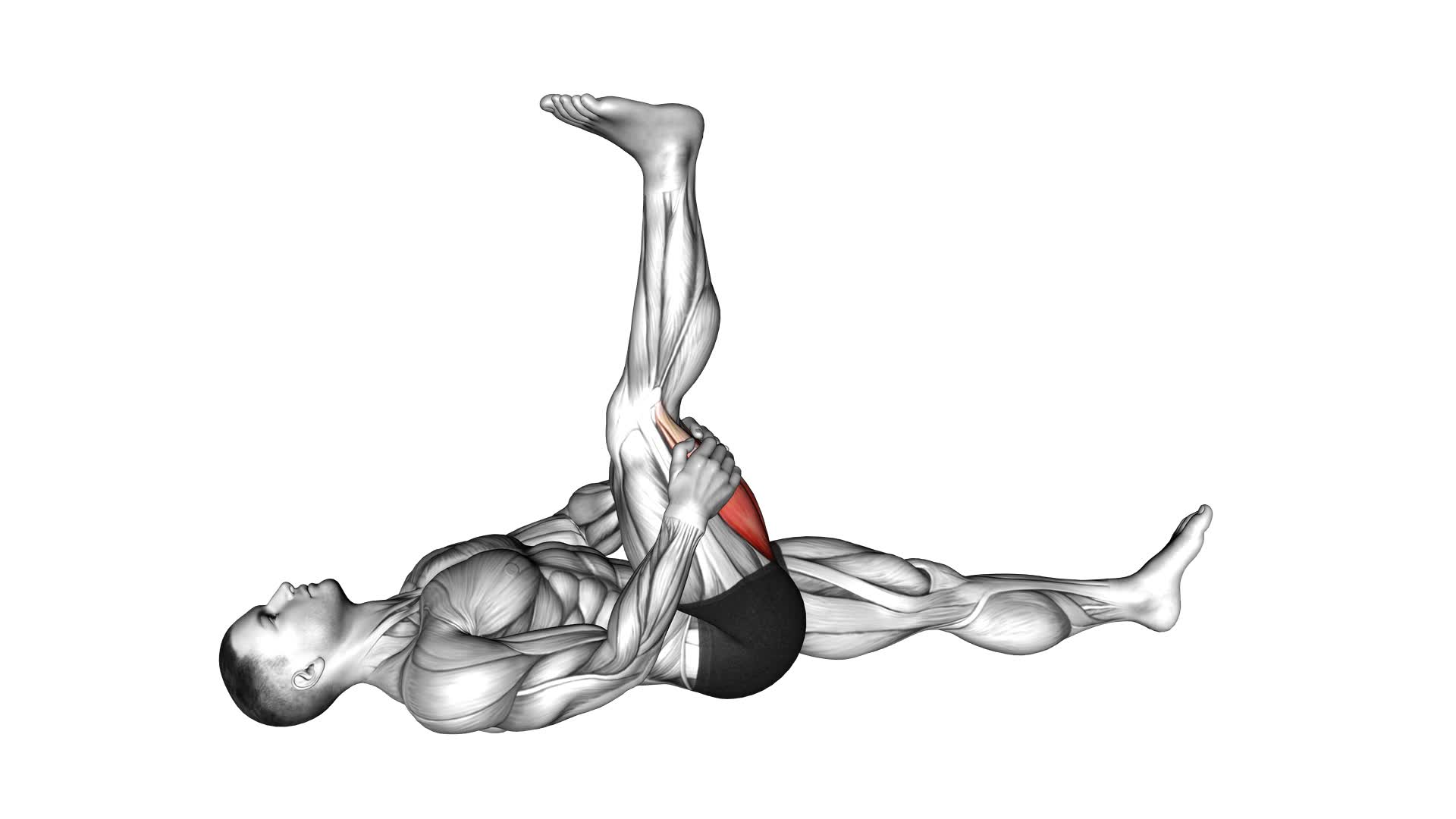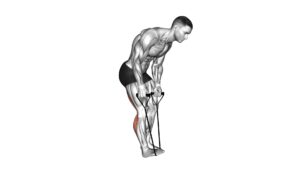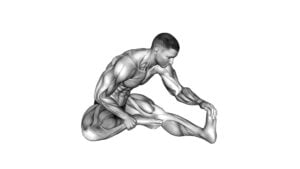Hamstring Stretch – Video Exercise Guide & Tips

Are you looking to improve your flexibility and prevent injury? Check out our Hamstring Stretch – Video Exercise Guide & Tips!
Watch This Exercise Video
This informative and instructional article will show you the proper technique for hamstring stretches, common mistakes to avoid, and advanced stretches to increase your flexibility.
With our helpful tips, you'll be able to incorporate hamstring stretches seamlessly into your exercise routine.
Watch the video and start stretching today!
Key Takeaways
- Hamstring stretches can increase flexibility and improve athletic performance.
- Proper technique for hamstring stretches includes lying down on your back, extending one leg straight out, and using a towel or strap for support if needed.
- Common mistakes to avoid during hamstring stretches include bouncing or jerking movements, insufficient stretch duration, and overstretching the hamstrings.
- Advanced hamstring stretches for increased flexibility include standing forward fold, reclining hand-to-big-toe pose, pigeon pose, and standing splits.
Benefits of Hamstring Stretches
To maximize the benefits of hamstring stretches, incorporate them into your regular exercise routine. Hamstring stretches aren't only beneficial for increasing flexibility, but also for preventing hamstring injuries and improving athletic performance. By regularly stretching your hamstrings, you can help to reduce the risk of strains and tears that can occur during physical activities such as running, jumping, or kicking.
When you perform hamstring stretches, you're lengthening the muscles and tendons in the back of your thigh. This increased flexibility allows for a greater range of motion in your hips and knees, which can improve your overall athletic performance. Whether you're a professional athlete or just enjoy participating in recreational activities, having flexible hamstrings can help you move more efficiently and effectively.
In addition to preventing injuries and improving performance, hamstring stretches can also aid in relieving tightness and discomfort in the lower back and hips. Many people experience tightness in these areas due to prolonged periods of sitting or physical inactivity. Incorporating hamstring stretches into your exercise routine can help to alleviate this tightness and improve overall mobility.
Now that you understand the benefits of hamstring stretches, let's move on to the proper technique for performing these stretches.
Proper Technique for Hamstring Stretches
When performing hamstring stretches, it's important to use proper technique to effectively stretch the muscles and prevent injuries. Proper technique not only ensures that you're targeting the right muscles but also reduces the risk of strain or other injuries.
To begin, find a comfortable space where you can lie down on your back. Extend one leg straight out on the floor while keeping the other leg bent with the foot flat on the ground. Slowly raise the extended leg towards the ceiling, using a towel or strap wrapped around your foot for support if needed. Hold this position for 20-30 seconds and then slowly lower the leg back down. Repeat this stretch 2-3 times on each leg.
While performing the hamstring stretch, it's important to avoid bouncing or jerking movements, as this can increase the risk of injury. Instead, focus on maintaining a steady and controlled movement throughout the stretch. If you experience any pain or discomfort, stop the exercise immediately.
Regularly incorporating hamstring stretches into your routine can help alleviate hamstring tightness and reduce the risk of injuries. Remember to always warm up before stretching and consult with a healthcare professional if you have any pre-existing conditions or concerns.
Common Mistakes to Avoid During Hamstring Stretches
One common mistake to avoid during hamstring stretches isn't maintaining a steady and controlled movement. It's important to remember that the goal of hamstring stretches is to improve hamstring flexibility, and this can only be achieved with proper technique and form.
When performing hamstring stretches, it's crucial to avoid bouncing or jerking movements, as this can lead to muscle strain or injury. Instead, focus on a smooth and controlled motion, gradually increasing the stretch without causing any discomfort or pain.
Another common mistake isn't holding the stretch for a sufficient amount of time. To effectively improve hamstring flexibility, it's recommended to hold each stretch for at least 30 seconds. This allows the muscle fibers to lengthen and relax, leading to better overall flexibility.
Additionally, it's important to avoid overstretching the hamstrings. Stretching techniques such as PNF (proprioceptive neuromuscular facilitation) or dynamic stretching can be used to gradually increase the range of motion without putting excessive strain on the muscles.
Advanced Hamstring Stretches for Increased Flexibility
Try incorporating advanced hamstring stretches into your routine to enhance your flexibility. These stretches can help you to further improve the range of motion in your hamstrings and increase your overall flexibility.
Here are some advanced hamstring stretches that you can try:
- Standing Forward Fold: Stand with your feet hip-width apart and fold forward from your hips, reaching your hands towards the ground. Keep your knees slightly bent and focus on lengthening your spine.
- Reclining Hand-to-Big-Toe Pose: Lie on your back and extend one leg towards the ceiling. Hold onto your big toe with your hand and gently pull your leg towards your head. Keep your other leg extended on the ground.
- Pigeon Pose: Start in a downward facing dog position and bring one leg forward, bending the knee and placing the foot near the opposite hand. Extend the other leg behind you and lower your upper body towards the ground.
- Standing Splits: Stand with your feet hip-width apart and lift one leg straight up towards the ceiling, keeping your hips squared. Flex your foot and reach towards your toes with your hands.
Incorporate these advanced yoga poses and dynamic stretching techniques into your routine to challenge your flexibility and help you achieve new levels of mobility. Remember to warm up properly before attempting these stretches and always listen to your body to avoid injury.
Tips for Incorporating Hamstring Stretches Into Your Exercise Routine
To maximize the benefits of hamstring stretches, incorporate them into your exercise routine using these helpful tips.
One way to incorporate hamstring stretches into your routine is by incorporating yoga. Yoga poses such as Downward-Facing Dog, Standing Forward Fold, and Seated Forward Bend are great for stretching the hamstrings. These poses not only help to lengthen and strengthen the muscles but also provide a calming effect on the mind and body.
Another tip is to include dynamic stretching exercises for your hamstrings. Dynamic stretching involves moving through a range of motion, which helps to warm up the muscles and increase flexibility. Examples of dynamic hamstring stretches include walking lunges, high kicks, and leg swings.
It's important to remember to warm up your body before performing hamstring stretches. This can be done through activities such as light jogging or cycling.
Lastly, make sure to listen to your body and not push yourself too far. Start with gentle stretches and gradually increase the intensity as your flexibility improves.
Frequently Asked Questions
Can Hamstring Stretches Help Improve Athletic Performance?
Hamstring stretches can definitely help improve your athletic performance. By increasing hamstring flexibility, these stretches can enhance your range of motion and prevent injuries during physical activities.
The benefits of hamstring stretches include improved muscle coordination and balance, increased power and speed, and reduced muscle soreness after workouts.
Incorporating regular hamstring stretches into your exercise routine won't only make you a better athlete but also contribute to your overall fitness and well-being.
Are There Any Specific Precautions or Contraindications for Performing Hamstring Stretches?
Before performing hamstring stretches, it's important to be aware of any precautions or contraindications.
Precautions include avoiding this stretch if you have a recent hamstring injury or inflammation. Additionally, if you have any lower back issues, it's best to consult with a healthcare professional before attempting this exercise.
Contraindications for hamstring stretches include acute muscle tears or strains, nerve impingements, or any other condition that may worsen with stretching.
Always listen to your body and proceed with caution.
Can Hamstring Stretches Relieve Lower Back Pain?
Hamstring stretches can provide relief for lower back pain. By stretching the hamstring muscles, you can improve flexibility and reduce tightness in the back. When the hamstrings are tight, they can pull on the lower back, causing discomfort. Regularly performing hamstring stretches can help alleviate this tension and promote better posture.
Additionally, hamstring stretches help increase blood flow to the muscles, aiding in their recovery and reducing the risk of injury.
How Often Should Hamstring Stretches Be Done for Optimal Results?
To get the optimal results from hamstring stretches, it's important to focus on frequency. By doing hamstring stretches regularly, you can experience the full benefits.
It's recommended to incorporate hamstring stretches into your workout routine at least two to three times a week. This consistent practice will help improve flexibility, prevent muscle tightness, and reduce the risk of injury.
Remember to always warm up before stretching and listen to your body to avoid overstretching.
Are There Any Modifications or Variations of Hamstring Stretches for Individuals With Limited Flexibility?
To modify hamstring stretches for individuals with limited flexibility, there are a few options.
You can use a yoga strap or towel to loop around your foot and gently pull towards your body.
Another modification is to perform the stretch while sitting on a chair or bench, with one leg extended straight out and the other foot flat on the ground.
These modifications are great for beginners and can help gradually increase flexibility in the hamstrings.
Conclusion
Incorporating hamstring stretches into your exercise routine can provide numerous benefits, including increased flexibility, reduced muscle tension, and improved athletic performance.
By following the proper technique and avoiding common mistakes, you can effectively stretch your hamstrings and prevent injuries.
For those looking to take their flexibility to the next level, advanced hamstring stretches can be incorporated.
Remember to always consult with a healthcare professional before starting any new exercise routine.

Author
Years ago, the spark of my life’s passion ignited in my mind the moment I stepped into the local gym for the first time. The inaugural bead of perspiration, the initial endeavor, the very first surge of endorphins, and a sense of pride that washed over me post-workout marked the beginning of my deep-seated interest in strength sports, fitness, and sports nutrition. This very curiosity blossomed rapidly into a profound fascination, propelling me to earn a Master’s degree in Physical Education from the Academy of Physical Education in Krakow, followed by a Sports Manager diploma from the Jagiellonian University. My journey of growth led me to gain more specialized qualifications, such as being a certified personal trainer with a focus on sports dietetics, a lifeguard, and an instructor for wellness and corrective gymnastics. Theoretical knowledge paired seamlessly with practical experience, reinforcing my belief that the transformation of individuals under my guidance was also a reflection of my personal growth. This belief holds true even today. Each day, I strive to push the boundaries and explore new realms. These realms gently elevate me to greater heights. The unique combination of passion for my field and the continuous quest for growth fuels my drive to break new ground.







